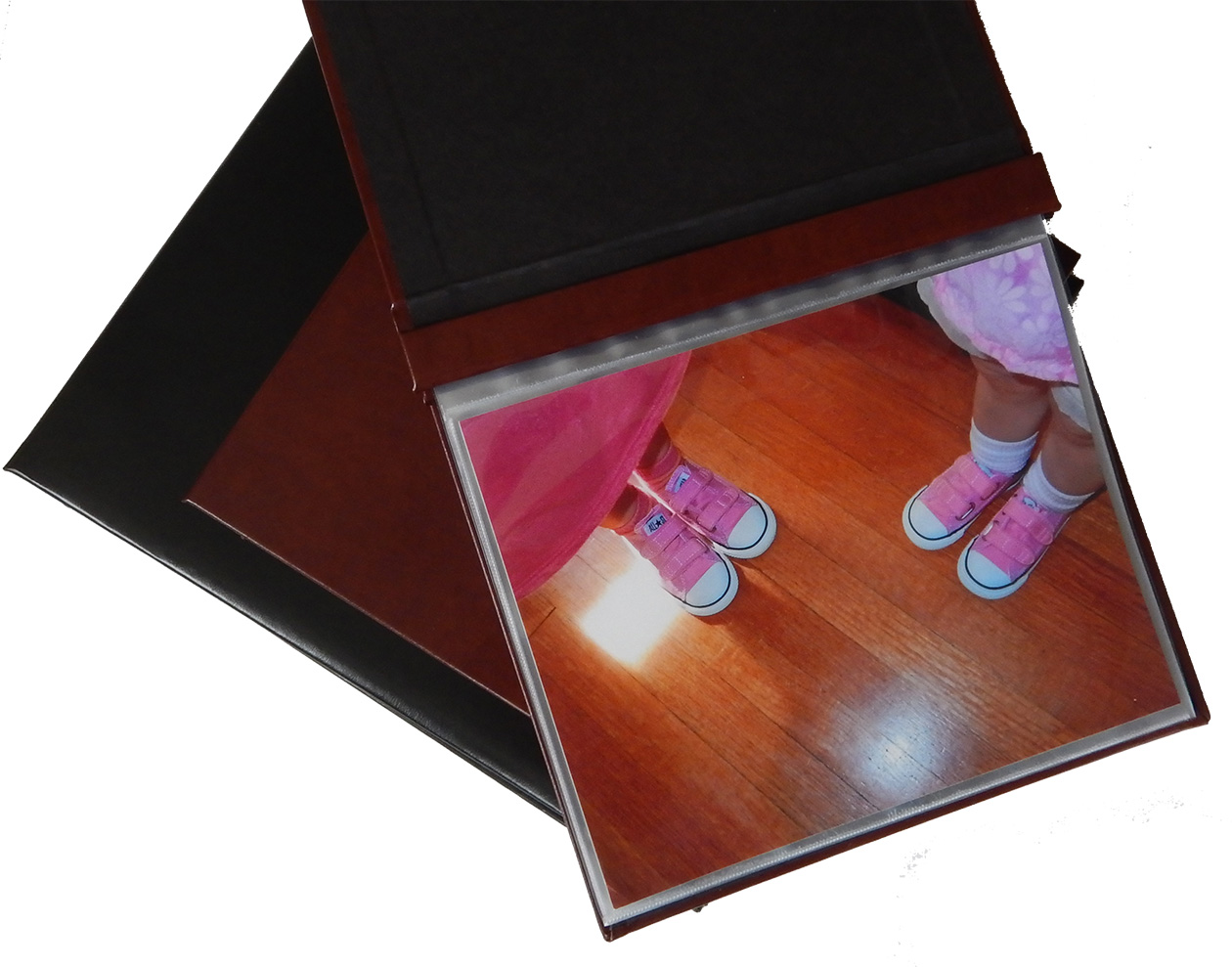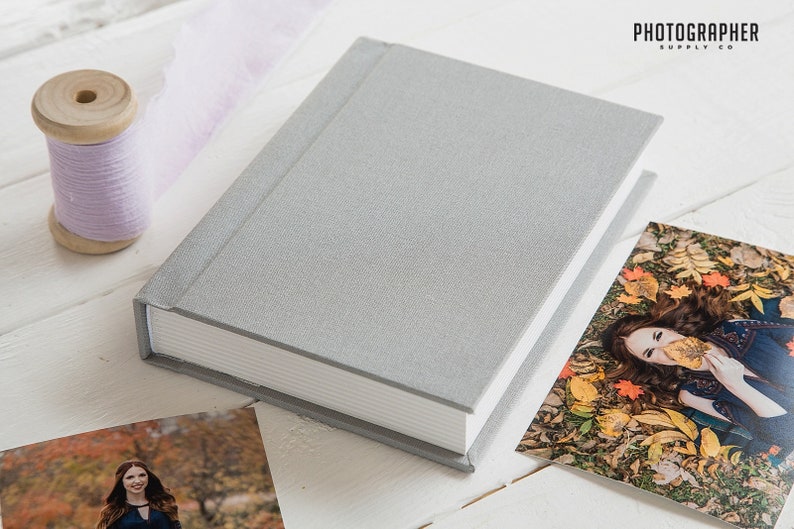


In our experience, albums too large to fit on a shelf are stored away in attics or basements and rarely looked at. Though you want to pick a photo album that's large enough to hold all the snaps you intend to put inside, it shouldn't be too large to fit on your bookshelf. Photo albums come in a range of sizes, from compact albums large enough to hold a single, standard (four by six inch) photo per page, to huge A3 or A2 tomes. If you don't particularly like the appearance of leather, fabric-covered photo albums are a durable alternative. The majority of "leather-bound" photo albums are actually bound with faux leather, which is almost as durable, cheaper, and suitable for use by vegans and people who avoid using certain animal products for religious reasons. In today's market, photo albums bound in real leather are uncommon. More common are either fabric-bound or leather-bound options. Some photo albums feature thick card covers, which is perhaps the least durable option. You don't want to be left with a load of blank pages you'll be unlikely to fill, but you don't want to run out of space, either.Ĭhoose a quality cover material and your photo album will last longer. Choose an album with an appropriate amount of pages for the photos you want to display. A 40-page, or 40-side, album has 20 double-sided pages, so essentially 40 useable pages. Photo albums should list the number of pages they contain - these are sometimes referred to as sides.

These let you open the binding to add new pages, remove pages, or rearrange pages if you decide the snapshots would look better in a different order. This can be remedied, however, by choosing a concealed wire-bound album, which looks from the outside like a case-bound book, but spiral binding is hidden inside.Īlthough they're not as popular, you can also find ring-bound photo albums. It's easier to lay a spiral-bound album completely flat, but they don't look quite as neat on a bookshelf as case-bound options. Wire and spiral-bound photo albums feature pages mounted on a wire spiral, much like a reporter's notebook.

#Photo album for 8x10 photos free
If you like the idea of being free to place your photos anywhere on the page and in any orientation, but don't want to stick them down permanently, a quality album with photo corners is your best bet. You can also trap dust, hairs, and other things under the plastic, which is especially problematic if you have furry pets around. The other drawback is that the adhesive yellows over time and can be damaging to the photos, so this isn't the best type of photo album for passing down the generations. However, once the photos are affixed to the page, you generally can't peel them off, so you need to get the layout right the first time. What's great about self-adhesive photo albums is that it's easy to be creative with the photo layout and it’s quick to stick photos in place. To affix photos to the album, you peel back the clear plastic and stick your photos directly to the adhesive page, then stick the clear plastic back over the top when you're done. Self-adhesive photo albums have sticky pages covered in a clear sheet of plastic. It's also impossible to be creative with the layout of a slip-in photo album, since the pockets are fixed. You can do it, of course, but you'll need to turn the album to look at a portrait photo on a page of landscape snaps, which detracts from the viewing experience. But, on the downside, all the pockets are orientated the same way, which makes it difficult to store a mixture of portrait and landscape photos. It's quick and easy to store photos in a slip-in album and allows for easy rearranging of your snaps. Perhaps the most common variety on the market, slip-in photo albums feature fixed pockets in which to put your photos. Some photo albums have space for notes, which is great for adding pieces of information about when or where photos were taken, or even fun anecdotes about days out.


 0 kommentar(er)
0 kommentar(er)
